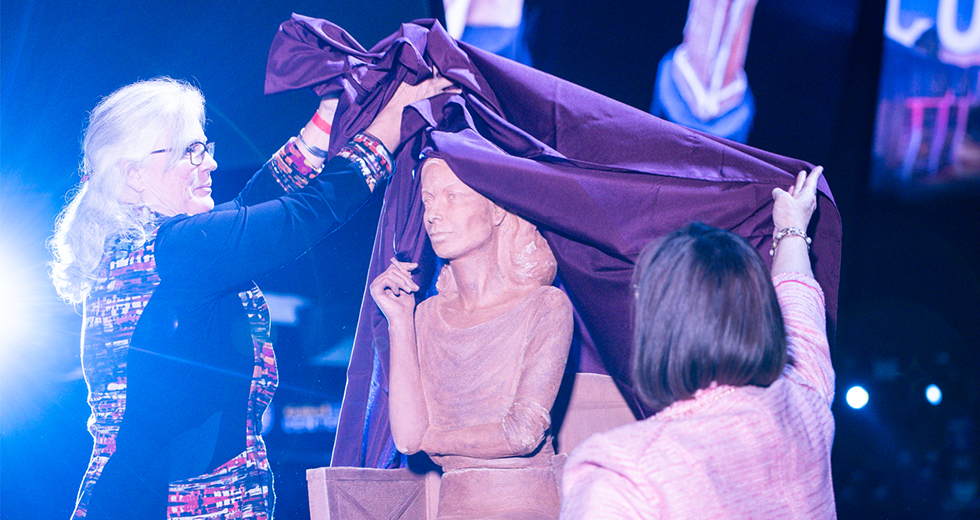“Don’t you think people are formed by the landscape they grew up in?” asked Lt. Gov. Eleni Koulanakis at The Golden Land Joan Didion Celebration at Golden 1 Center Nov. 10. The question framed the event, organized by Sacramento Historical Society and spearheaded by SHS Vice President Gregg Lukenbill. In speeches that preceded the unveiling of a statue in the late author’s image, city leaders and artists contemplated Didion’s relationship to Sacramento, focusing their eulogies on the intersection of place and identity.
The Golden Land celebration began with a silent auction and
refreshments.
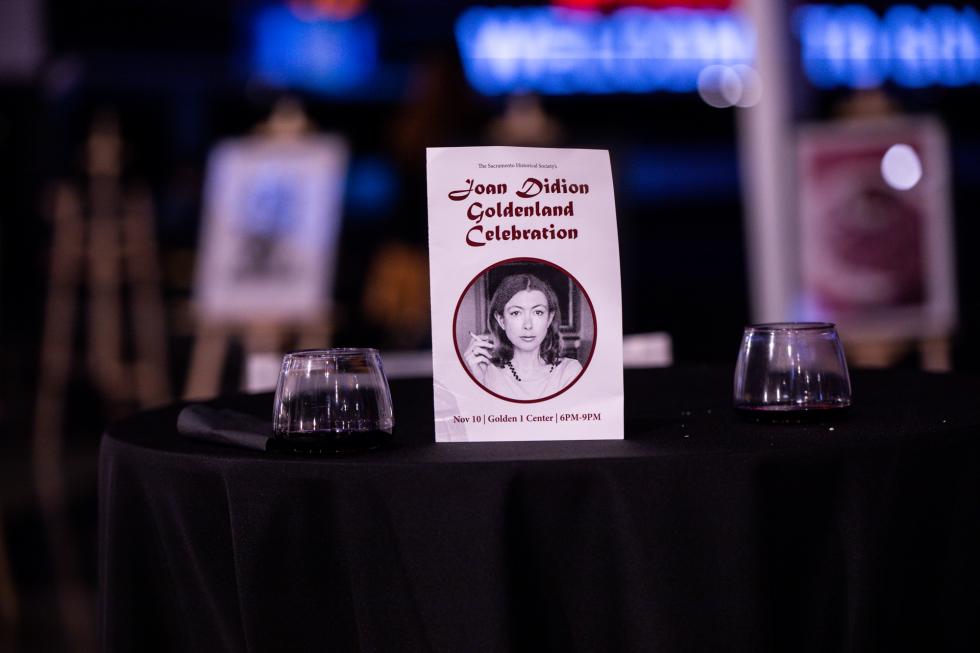
Before Joan Didion wrote her 11 subsequent books, including “Play It As It Lays” and “The Year of Magical Thinking,” she lived in California’s capital city as a fifth generation Sacramentan. Her family’s Poverty Ridge mansion, now known as The Didion House, was her home during her last two years at McClatchy High School. She attended Sacramento City College before transferring to UC Berkeley, where she wrote her first essay for Vogue magazine. Throughout her 87 years, Didion became known for her keen observational perspective, economical writing style and low-key, unassuming glamour.
Didion’s quote about “the golden land” comes from her 1967 essay
“Slouching Towards Bethlehem,” which became the title of her 1968
book of essays.
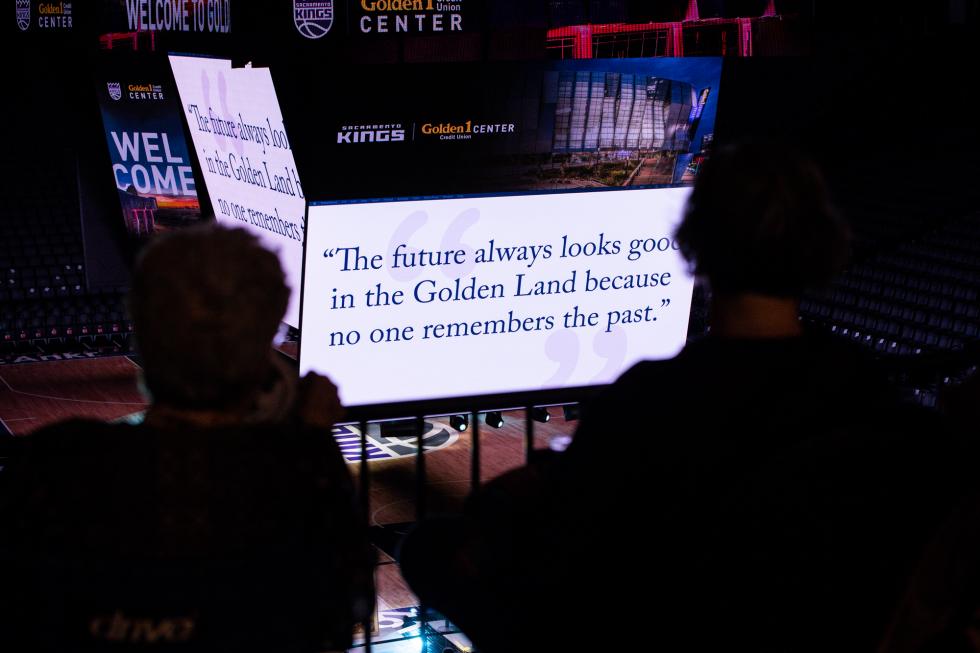
In a video clip of Charlie Rose’s interview with Didion in 1992,
the writer shared how she admired a “withholding” quality in
Ernest Hemingway’s sentences. Typing them out helped her learn
how they worked, she said.
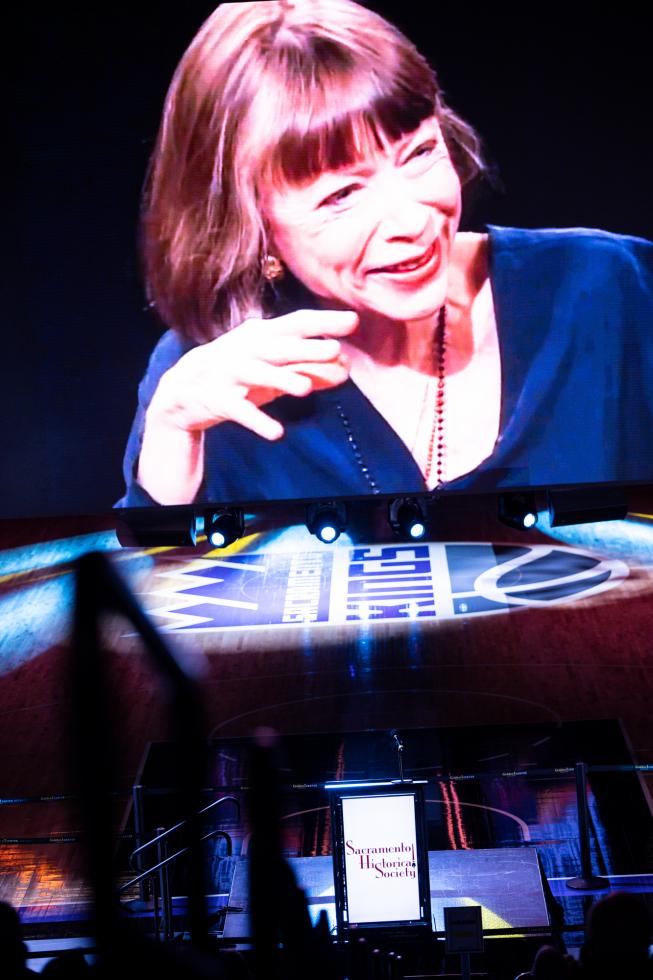
At the Golden Land celebration, however, sentiments suggested the contrary. “Joan Didion never forgot Sacramento,” said Mayor Darrell Steinberg as he took the stage. “No!” several impassioned audience members exclaimed in agreement. Sacramento would, in turn, never forget her, he said. As proof, the mayor declared the creation of an annual Joan Didion Day on her birthday, Dec. 5.
Mayor Darrell Steinberg declared Dec. 5, the late writer’s
birthday, as Joan Didion Day.
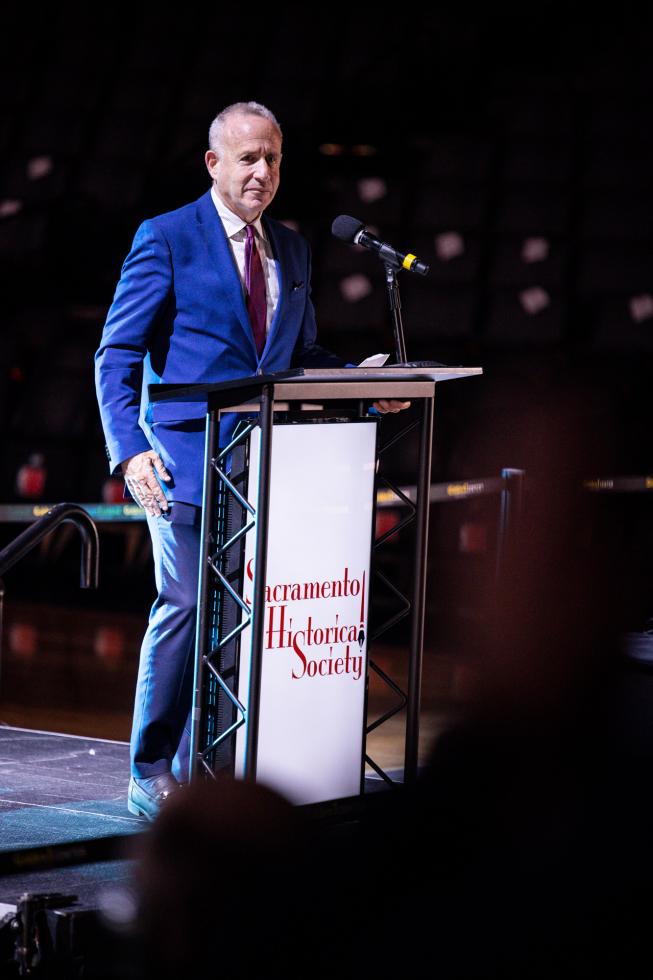
Steinberg celebrated the literary giant’s influence by illuminating Sacramento’s creative spirit. All we have to do, he said, is dig under the surface to see the renaissance of art and culture in the city. He shouted out 916 Ink, the Sacramento organization that offers free creative writing workshops for children, for its mission to give power to the written word.
Sacramento Historical Society displayed some of Didion’s most
iconic quotes between speakers throughout the ceremony.

Between talks, SHS projected archival videos, biographical slides and text snippets of Didion’s most iconic quotes onto a large screen, casting a glow over the west quadrant of the court. “A place belongs forever to whoever claims it hardest, remembers it most obsessively, wrenches it from itself, shapes it, renders it, loves it so radically that he remakes it in his own image,” read one quote ensconced in oversized pink quotation marks.
Sacramento Historical Society played several short videos
depicting Joan Didion’s life and work.

In contrast to Didion’s towering influence over the Sacramento region were humanizing tidbits about her youth. In a video recorded for the event, former Gov. Jerry Brown remembered Didion as his older sister’s friend at UC Berkeley, and described his impression of the writer as “gentle and fierce.” He praised one of her early influential essays, “Many Mansions,” which explored the architecture of California governor mansions and, with her token critical perspective, the implications of class built into the institution.
Former Gov. Jerry Brown honored Didion in a video address.
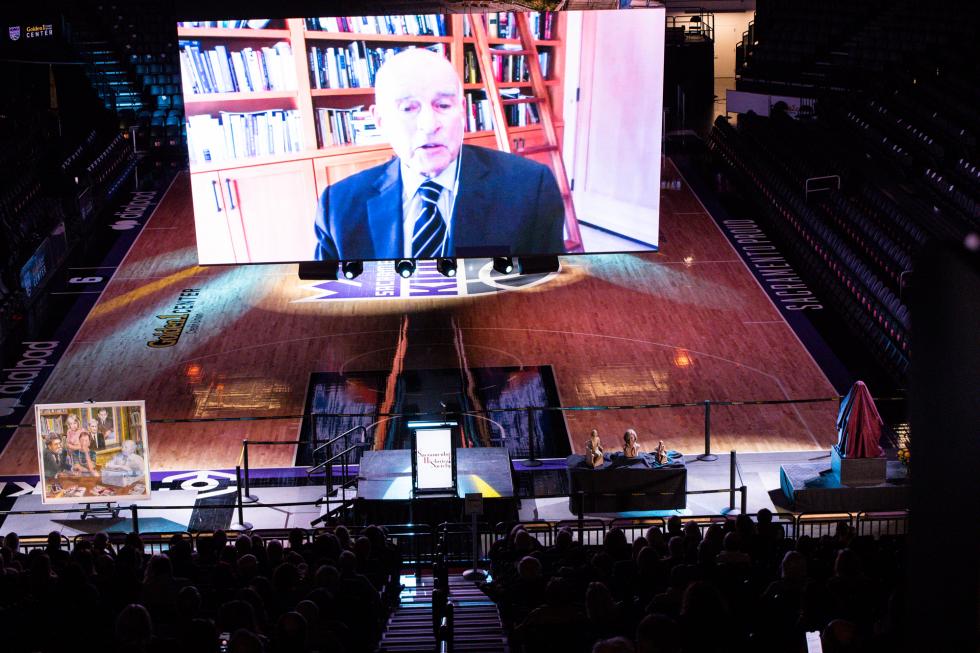
Erin Saberi spoke about her organization’s goal to create the
conditions “to bring about another Joan Didion.”

Commission on the Status of Women and Girls presented a quilt
made by Sacramento County girls, who illustrated it with things
they wanted to see in the world.

Ginny McReynolds, a former longtime English professor at Sacramento City College, spoke of the kinship she felt between herself and Didion, who she credited for indirectly giving her permission to write. “Her essays were always about more than they seemed,” McReynolds said, reading from a long-form essay of her own. Didion’s social, often political writing was about the “rungs of society who suffered,” McReynolds said. “The reader sees themselves in every piece.”
McReynolds announced the creation of the Joan Didion Scholarships for Writers, established for Sacramento City College in partnership with the Sacramento Historical Society. The endowment will support aspiring writers at the college with an emphasis on English or journalism majors beginning in the spring of 2023.
Guests perused works of art at the silent auction that preceded
the ceremony.
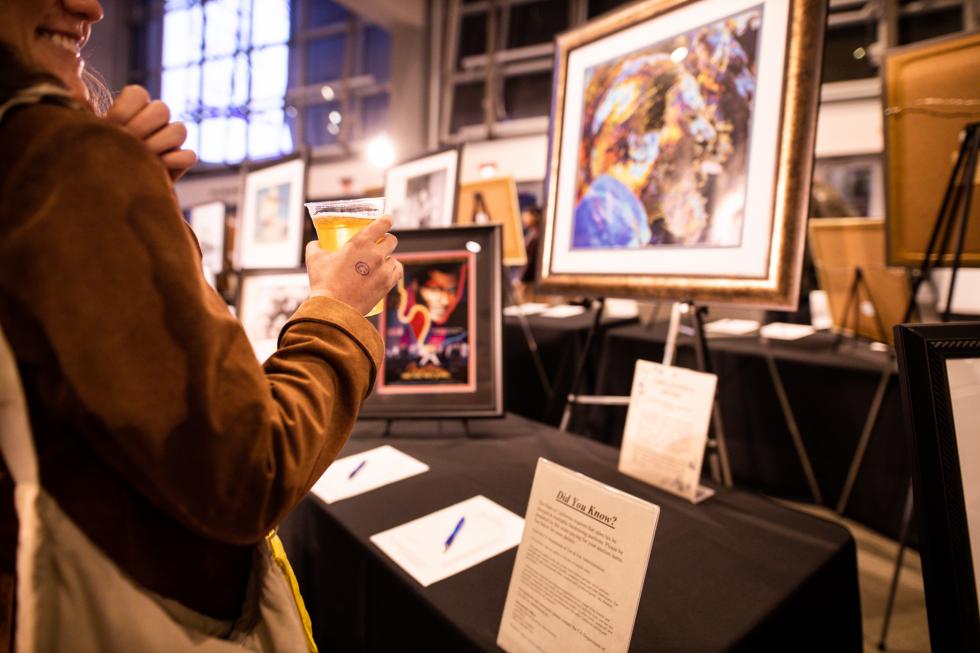
Tributes broadened into commentary around place. Sacramento Bee editorial cartoonist Jack Ohman defended Sacramento’s identity crisis. “We’re not inferior to any city,” Ohman shouted for comedic effect, “and Joan Didion was born here.”
Sacramento Historical Society displayed Didion’s books and passed
out trivia questions about her life.

After the remembrances, attention turned to the visual dedications onstage. Artist Jerald Silva introduced his new painting of what he described as “Sacramento’s groundbreaking writers” — Joan Didion, philosopher and political activist Cornel West, labor organizer and storyteller Ernesto Galarza, journalist Herb Caen and author Ann Bannon. Silva shared his process of being in conversation with the people he paints, and the poignant, heartbreaking experience of hearing of Didion’s death just as he was painting her.
Jerald Silva’s painting of “Sacramento’s groundbreaking writers”
was displayed on the Golden 1 Center stage.
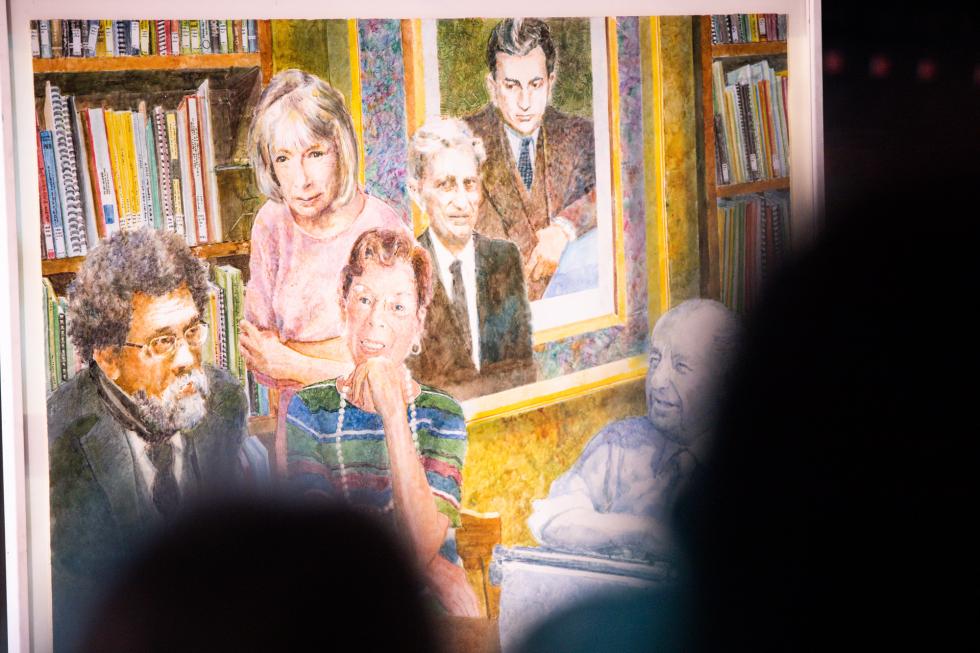
The night culminated in the unveiling of the life-sized statue of Didion posing in her chair, arms and ankles crossed, signature cigarette in hand. Figurative ceramicist Lisa Reinertson was commissioned for the sculpture, which she introduced with slides that laid out her inspiration and creative methods. After reading a few of her books, Reinertson said, she began to think about Didion’s themes. Symbols began to emerge, which she etched into the exterior of Didion’s throne. Across the chair’s back, a snake slithers to connote the cover of “Play It As It Lays,” and pine branches signify Didion’s Donner family lineage. Reinertson said that while she experimented with a pen in her hand at first, the cigarette, a common prop in photographs of young Didion, felt more natural and fitting.
Lisa Reinertson unveils her Joan Didion sculpture. Before being
commissioned for the statue, Reinertson built figurative
sculptures of Martin Luther King Jr., Cesar Chavez, Senator
Dianne Feinstein and more.
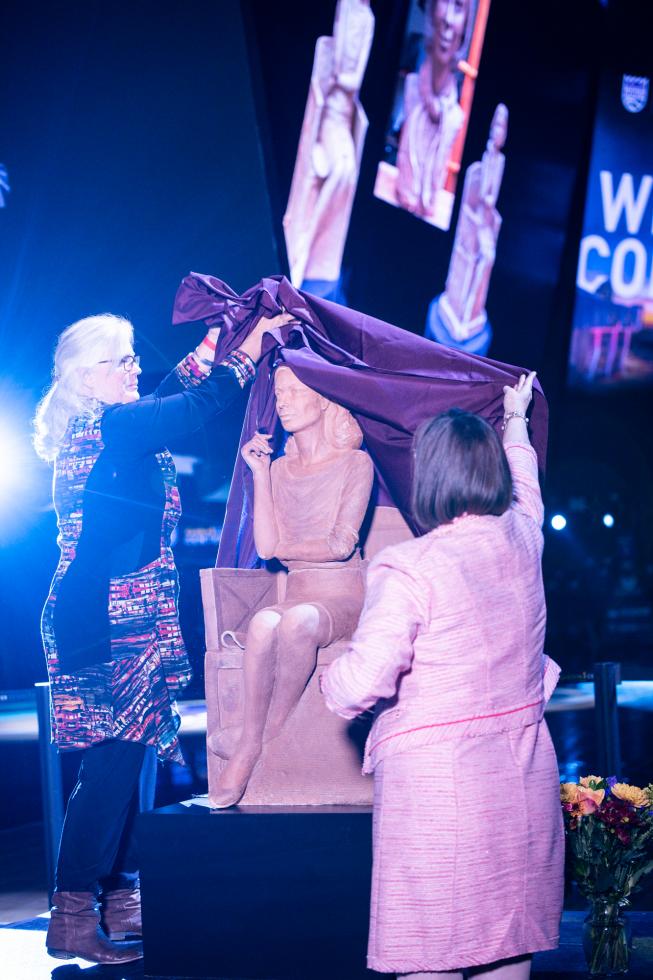
Audience members were invited to observe the statue up close as the festivities came to a close. The image of Sacramento’s native daughter will live permanently in the Sacramento Central Library, but, as former Gov. Brown uttered reverently, “We won’t be seeing the likes of her again, ever.”
The life-sized Joan Didion statue unveiled at the Golden Land
Celebration will live in the Sacramento Room of the Sacramento
Central Library.
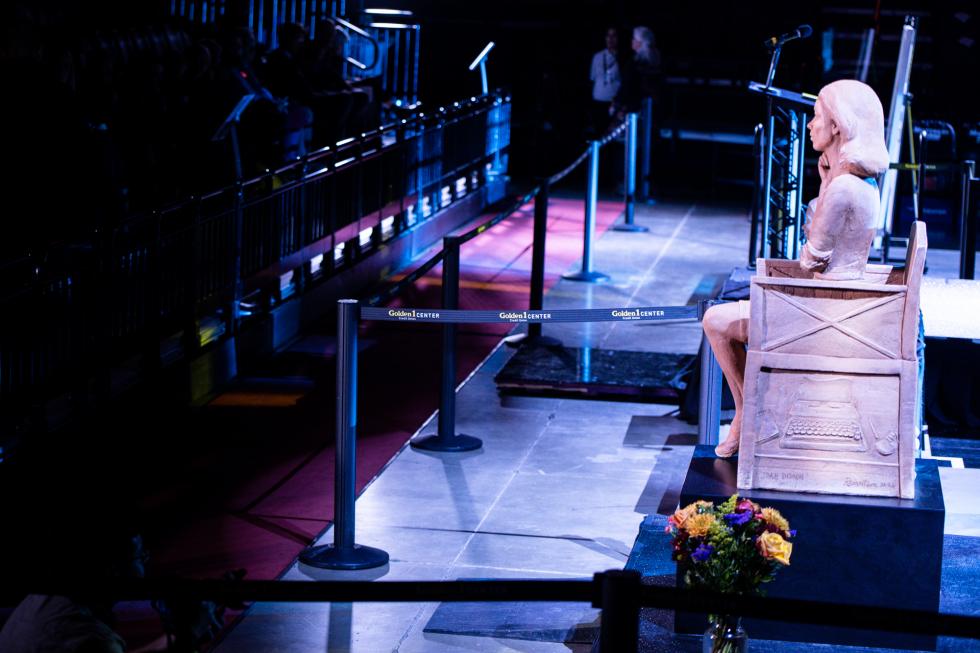
–
Stay up to date on business in the Capital Region: Subscribe to the Comstock’s newsletter today.
Recommended For You

Getting Creative
Sacramento’s Creative Edge plan aims to make the city more desirable and spur the economy
Art is often dismissed as “nice to have,” a tougher pill to swallow than funding public safety agencies. But culture has been shown to make a city more desirable — and that can have a booming effect on a local economy.
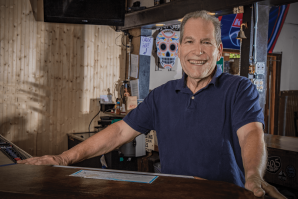
The New Adventures of Gregg Lukenbill: Catching Up With the Man of a Thousand Projects
From owning a professional basketball team and starting an airline service to resuscitating a neighborhood bar, this Sacramento native refuses to slow down
Gregg Lukenbill has a lifelong, nearly unconditional love
for the city he helped build. Get to know the former Sacramento
Kings owner and his new project to revive a legendary bar.
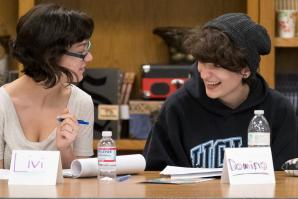
Indelible Impressions
916 Ink hosts creative writing classes for children at their “Imaginarium” in Sacramento
Katie McCleary and 916 Ink co-founder Michael Spurgeon knew they wanted to start a creative nonprofit for children when they met at a writer’s conference in 2010. They believed Sacramento could support such a program because there was already a strong writing community here, nurtured by programs like the Sacramento Poetry Center, but there was a glaring, missing piece in Sacramento’s creative writing community — a youth program.

The Golden Promise
Most sports economists dismiss the idea that new stadiums boost local economies, but there are reasons to think the Golden 1 Center could be different
When Oleg Kaganovich was growing up in Michigan in the 1980s and early ’90s, his city of Grand Rapids was suffering the doughnut effect then typical of downtowns everywhere: Shoppers and residents were fleeing for the suburbs. By 1990, fewer than one in 10 residents shopped regularly downtown, a drop from about one in three in the early 1960s, according to a local newspaper.

Sacramento Is No Longer Just a Capital City
November’s cover star, Sacramento Kings owner Vivek Ranadivé, isn’t the only one changing the city’s reputation. Many trends — big events, world-class sports and food — are contributing to Sacramento’s promising future. Comstock’s Editor Judy Farah considers just how close the region is to overcoming its stereotypes.
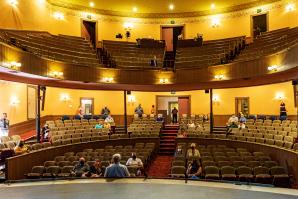
The Oldest Opera House in the Sacramento Valley Reopens (Again)
The Woodland Opera House reopened June 15, 1896 after a fire destroyed the original building. On June 15, 2021, it reopened after a different crisis.



